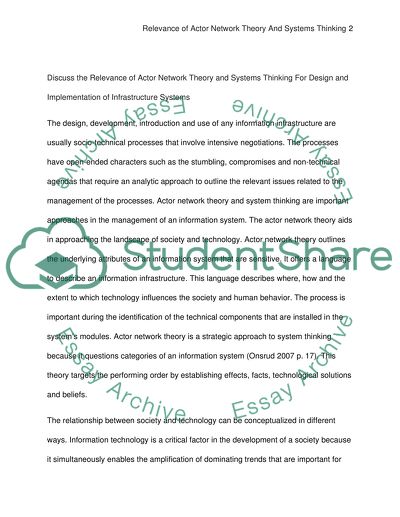Cite this document
(“Discuss the relevance of actor network theory and systems thinking for Essay”, n.d.)
Discuss the relevance of actor network theory and systems thinking for Essay. Retrieved from https://studentshare.org/environmental-studies/1668756-discuss-the-relevance-of-actor-network-theory-and-systems-thinking-for-design-and-implementation-of-infrastructure-systems
Discuss the relevance of actor network theory and systems thinking for Essay. Retrieved from https://studentshare.org/environmental-studies/1668756-discuss-the-relevance-of-actor-network-theory-and-systems-thinking-for-design-and-implementation-of-infrastructure-systems
(Discuss the Relevance of Actor Network Theory and Systems Thinking for Essay)
Discuss the Relevance of Actor Network Theory and Systems Thinking for Essay. https://studentshare.org/environmental-studies/1668756-discuss-the-relevance-of-actor-network-theory-and-systems-thinking-for-design-and-implementation-of-infrastructure-systems.
Discuss the Relevance of Actor Network Theory and Systems Thinking for Essay. https://studentshare.org/environmental-studies/1668756-discuss-the-relevance-of-actor-network-theory-and-systems-thinking-for-design-and-implementation-of-infrastructure-systems.
“Discuss the Relevance of Actor Network Theory and Systems Thinking for Essay”, n.d. https://studentshare.org/environmental-studies/1668756-discuss-the-relevance-of-actor-network-theory-and-systems-thinking-for-design-and-implementation-of-infrastructure-systems.


